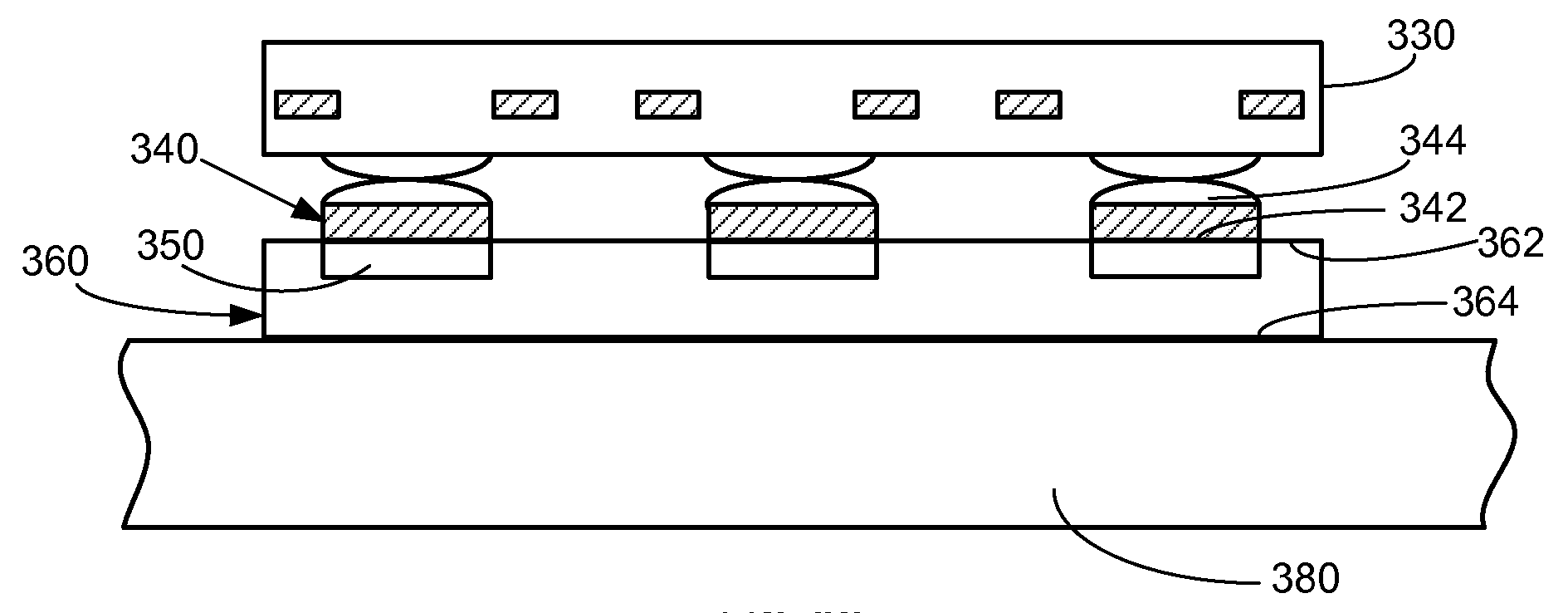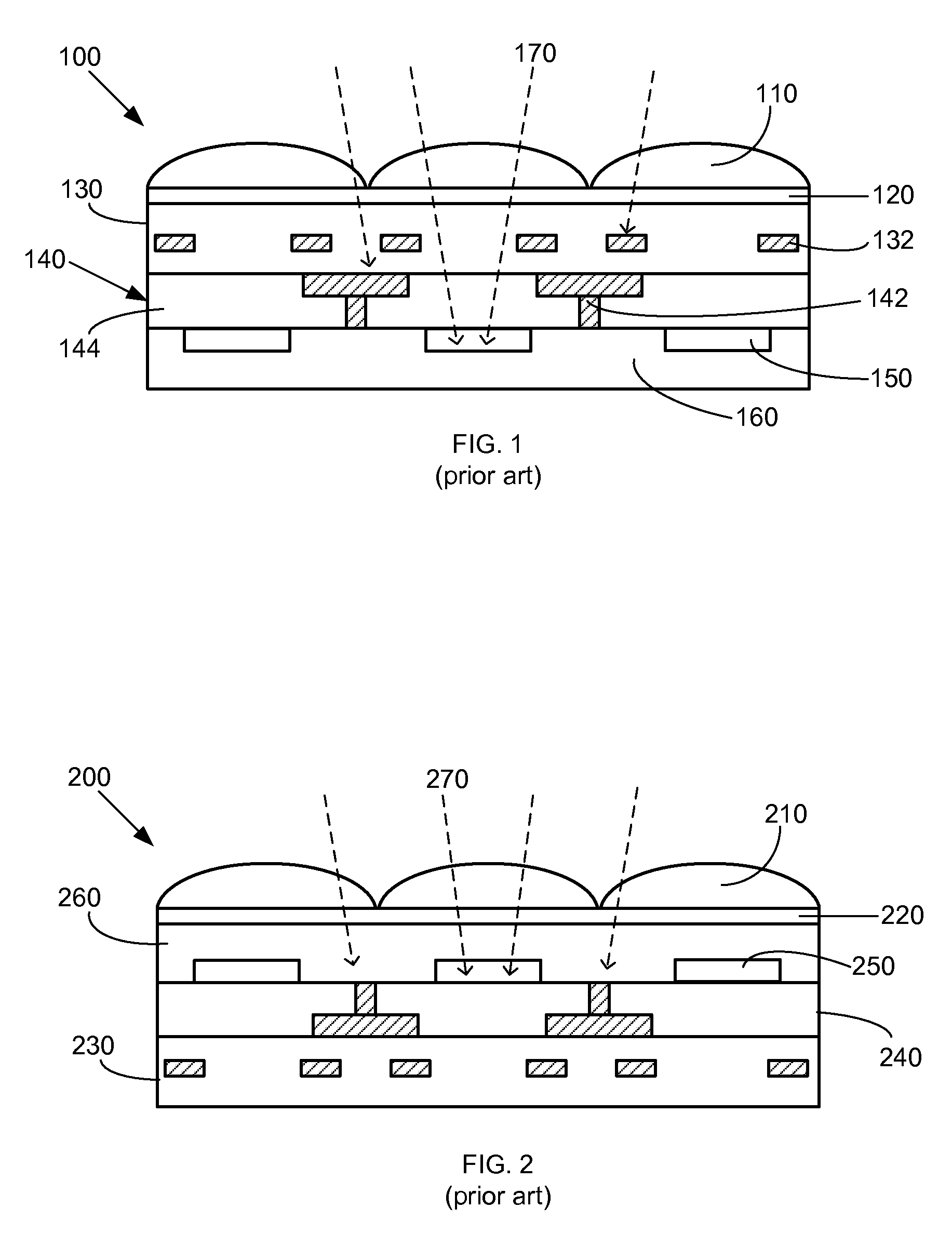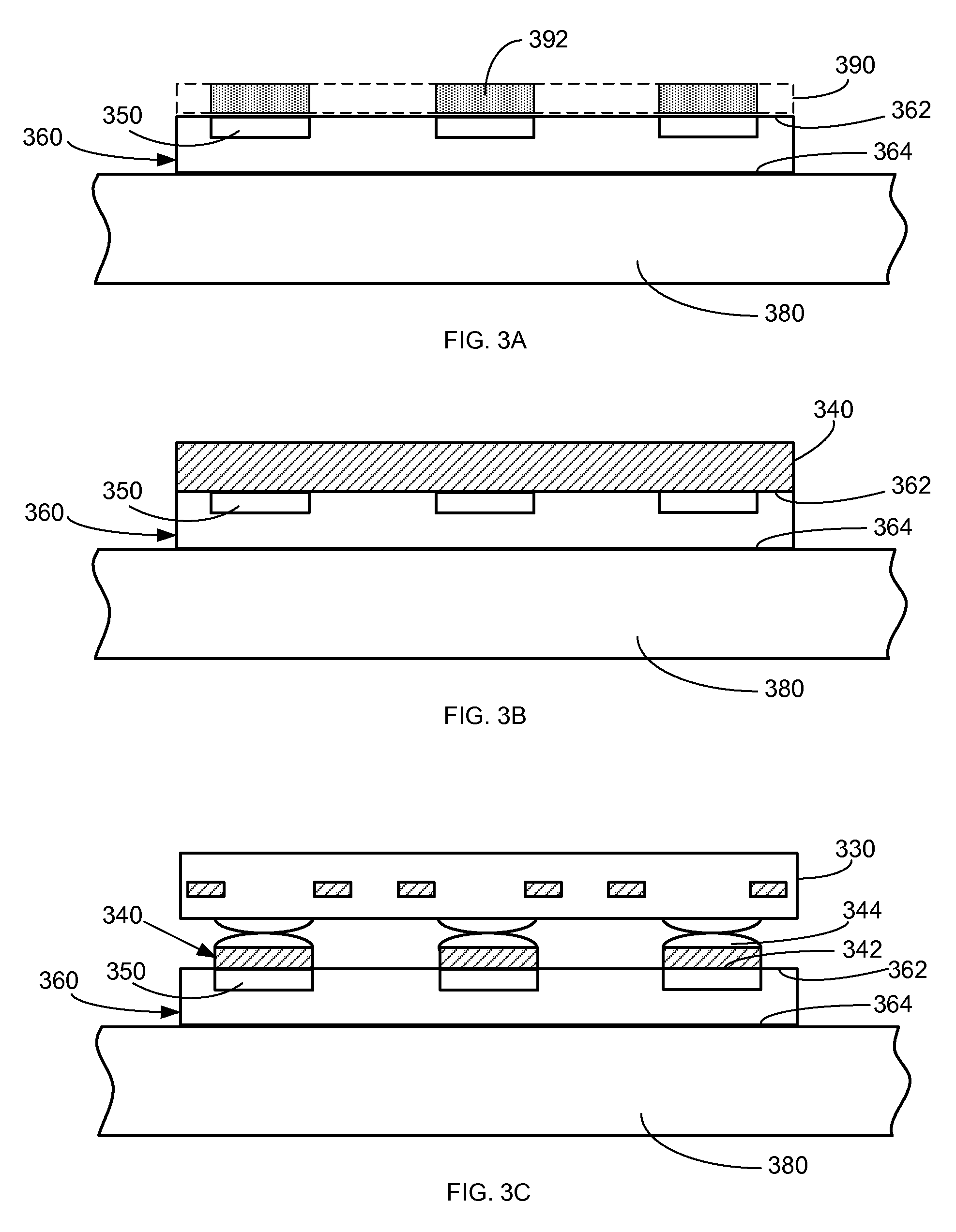Method for fabricating backside-illuminated sensors
a technology of backside illumination and sensor, which is applied in the direction of photovoltaic energy generation, electrical equipment, semiconductor devices, etc., can solve the problems of more shadowing, crosstalk and denser circuitry wiring, and increasing pixel density
- Summary
- Abstract
- Description
- Claims
- Application Information
AI Technical Summary
Benefits of technology
Problems solved by technology
Method used
Image
Examples
Embodiment Construction
[0014]A backside-illuminated sensor is fabricated using a lamina having a thickness substantially equivalent to the desired thickness for the finished sensor device. In some embodiments, the lamina may be provided as a free-standing lamina, in which doped regions are formed within and at a front surface of the lamina. In other embodiments, doped regions are formed in a first surface of a semiconductor donor body and a lamina is cleaved from the donor body, where the doped regions are within and at the front surface of the lamina. The methods disclosed herein enable improving throughput and decreasing manufacturing cost.
[0015]FIG. 1 shows a simplified view of a conventional FSI sensor 100 which includes lenses 110, color filter 120, integrated circuit 130, metal interconnect layer 140, doped regions 150 and semiconductor substrate 160. The semiconductor substrate 160 has a first conductivity and may be, for example, silicon. The doped regions 150 are doped to a different conductivity...
PUM
 Login to View More
Login to View More Abstract
Description
Claims
Application Information
 Login to View More
Login to View More - R&D
- Intellectual Property
- Life Sciences
- Materials
- Tech Scout
- Unparalleled Data Quality
- Higher Quality Content
- 60% Fewer Hallucinations
Browse by: Latest US Patents, China's latest patents, Technical Efficacy Thesaurus, Application Domain, Technology Topic, Popular Technical Reports.
© 2025 PatSnap. All rights reserved.Legal|Privacy policy|Modern Slavery Act Transparency Statement|Sitemap|About US| Contact US: help@patsnap.com



